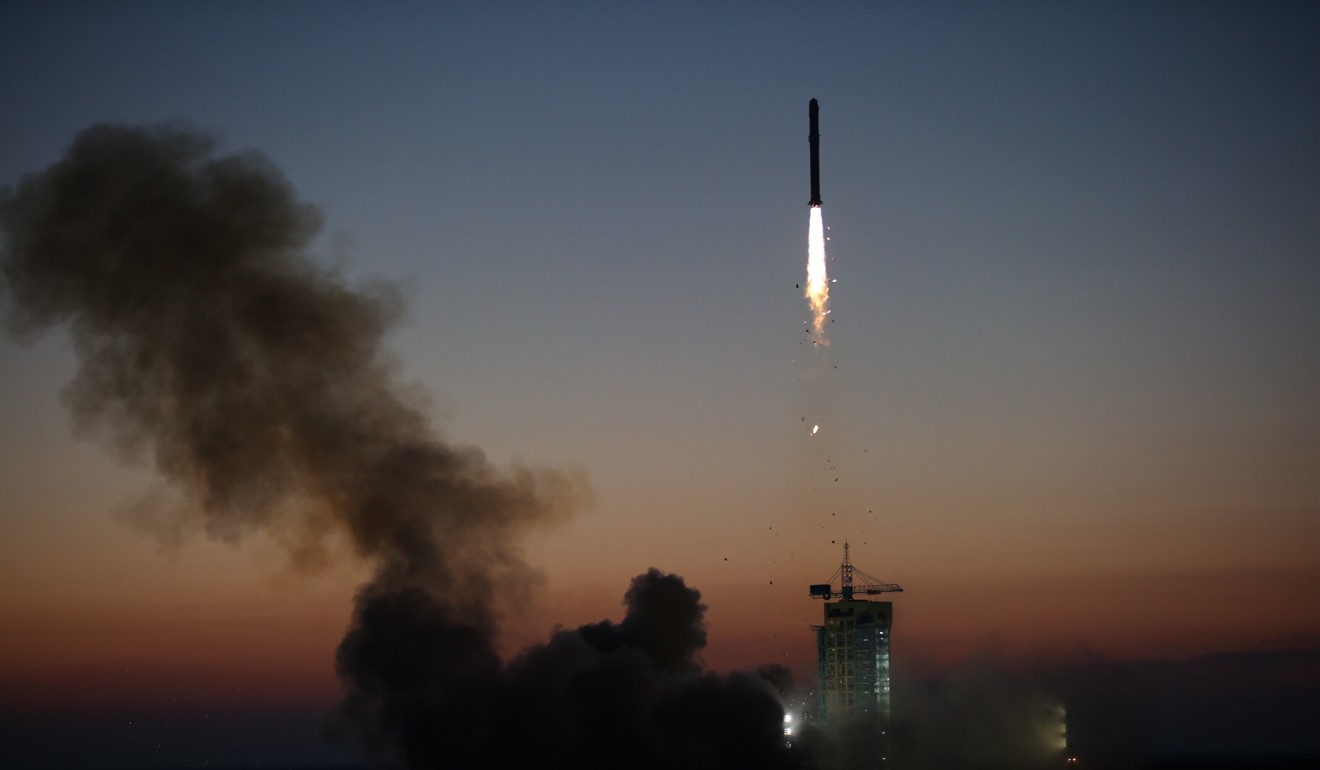
How a Chinese space probe might have shed light on the mystery of dark matter
Chinese researchers say they might have found the first trace of the elusive material thought to make up 80 per cent of the universe’s mass
China’s latest research on dark matter – one of the great mysteries of astronomy and physics – has sparked the publication of nearly 30 scientific papers in less than a week as physicists around the world debate the significance of the findings.
The Chinese team has detected what may be the first trace of the mysterious substance, which scientists believe makes up 80 per cent of the mass of the entire universe.
Dark matter poses a challenge to researchers because it does not interact with light or any other part of the electromagnetic spectrum.
But the Chinese probe Wukong orbiting the Earth has found evidence from deep space suggesting that two bodies of dark matter collided about 320 light years away from our planet.
The Chinese researchers suggest that some dark matter particles were “annihilated” during the process, releasing a huge amount of energy in the form of electrons and positrons.
Some of these pairs were later detected by Wukong’s cosmic ray detector, producing an extremely faint flash of light.
By counting and measuring the high-energy particles in this spike of light, scientists believe that for the first time they have been able to “weigh” the mass of dark matter.
They estimate the mass of a dark matter particle as a unit of energy could reach around 1.4 teraelectronvolts, nearly 1,500 times “heavier” than a neutron, one of the most common subatomic particles in the universe.
The Chinese team’s data was published in the scientific journal Nature last week.
In a paper posted on Tuesday on the online platform arXiv, Peter Athron and his colleagues at the school of physics and astronomy at Monash University in Melbourne wrote: “It could be the first precursor of dark matter detection.”
But Athron cautioned that further research was needed to confirm the Chinese team’s findings.
Twenty-eight papers commenting on the research had been posted on the platform by scientists in the United States, South Korea, Europe, Iran, Japan and other parts of the world by Thursday.
Karim Ghorbani, an assistant professor of physics at Arak University in Iran, co-wrote on the platform that the new observations made sense in principle and might open a window into a new form of physics.

Bi Xiaojun, a theoretical physicist involved in the Wukong programme at the Institute of High Energy Physics in Beijing, said the research was exciting because it was investigating a barely understood area of particle physics, the building blocks of everything found in the universe.
“Newton discovered the gravity of the Earth, Einstein discovered the speed of light. The measurement of dark matter mass would lead to another leap in physics,” Bi said.
Other nations involved in dark matter research include the United States, which has launched some of the world’s first space-based detectors looking for the material.

Many large and expensive ground facilities have been set up to try to detect dark matter, but all these efforts, including experiments conducted by Chinese researchers at the world’s deepest underground laboratory in Jinping in Sichuan province, have so far yet to produce conclusive results.
Scientists say they know dark matter exists because it gives the mass and gravitational pull needed to move stars and other celestial bodies around the universe.
Gao Liang, director of the Key Laboratory for Computational Astrophysics at the National Astronomical Observatories in Beijing, said there might be other explanations for the abnormal signal detected by the Chinese satellite, such as an emission from a rotating star or an error by the measuring equipment.
“Such false alarms have happened many times before. Each time the physical research community ended up with major disappointment,” he said, saying further research and confirmation was needed.
In particle physics, data must meet the five-sigma criterion, or 99.99994 per cent in terms of statistical confidence to be universally accepted by scientists.
The data gathered by Wukong was three-sigma, or 99.7 per cent confidence, according to Bi at the Institute of High Energy Physics. It might require another 1½ years of gathering data in orbit for the observation to qualify as a sure discovery, he said.

